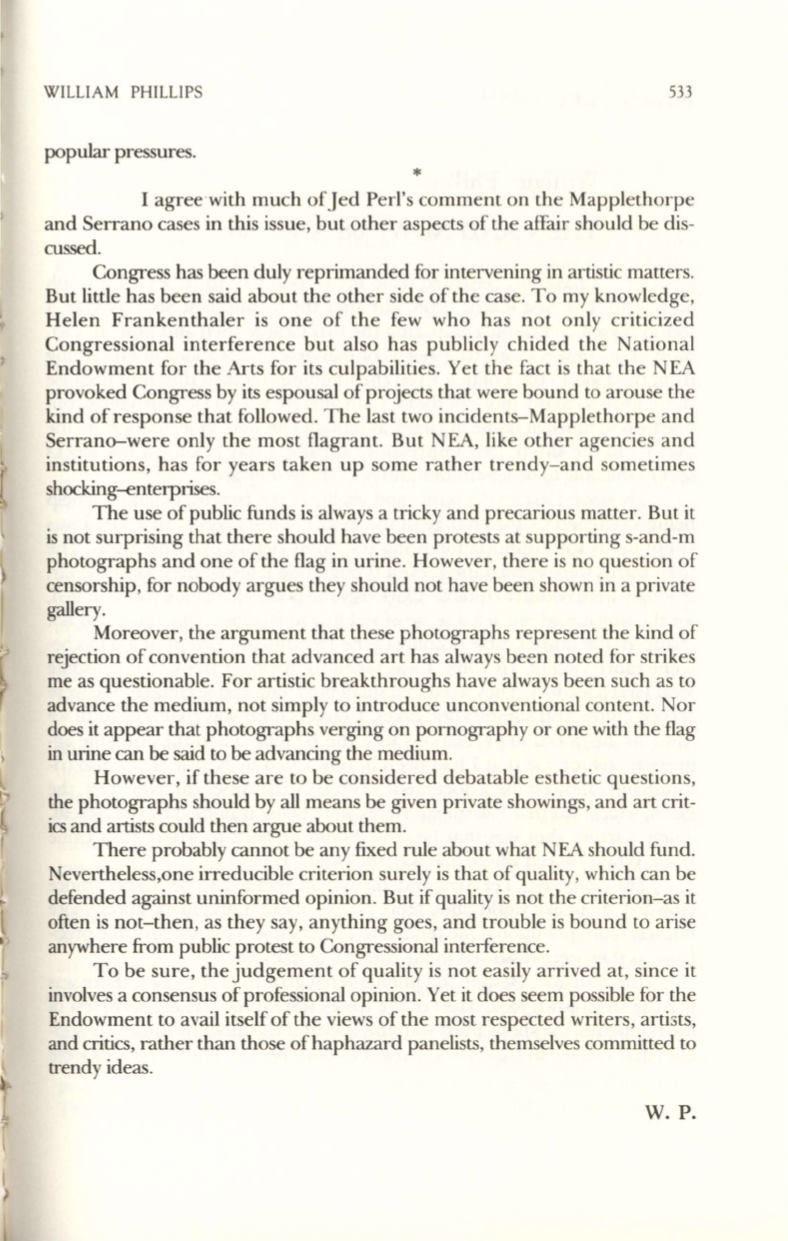
WILLIAM PHILLIPS
533
popular pressures.
*
I agree 'with much ofJed Perl's comment on the Mapplethorpe
and Serrano cases in this issue, but other aspects of the affair should be dis–
cussed.
Congress has been duly reprimanded for intervening in artistic matters.
But little has been said about the other side of the case. To my knowledge,
Helen Frankenthaler is one of the few who has not only criticized
Congressional interference but also has publicly chided the National
Endowment for the Arts for its culpabilities. Yet the fact is that the NEA
provoked Congress by its espousal of projects that were bound to arouse the
kind of response that followed. The last two incidents-Mapplethorpe and
Serrano-were only the most flagrant. But NEA, like other agencies and
institutions, has for years taken up some rather trendy-and sometimes
shocking-enterprises.
The use of public funds is always a tricky and precarious matter. But it
is not surprising that there should have been protests at supporting s-and-m
photographs and one of the flag in urine. However, there is no question of
censorship, for nobody argues they should not have been shown in a private
gallery.
Moreover, the argument that these photographs represent the kind of
rejection of convention that advanced art has always been noted for strikes
me as questionable. For artistic breakthroughs have always been such as to
advance the medium, not simply to introduce unconventional content. Nor
does it appear that photographs verging on pornography or one with the flag
in urine can be said to be advancing the medium.
However, if these are to be considered debatable esthetic questions,
the photographs should by all means be given private showings, and art crit–
ics and artists could then argue about them.
There probably cannot be any fixed rule about what NEA should fund.
Nevertheless,one irreducible criterion surely is that of quality, which can be
defended against uninformed opinion. But if quality is not the criterion-as it
often is not-then, as they say, anything goes, and trouble is bound to arise
anywhere from public protest to Congressional interference.
To be sure, the judgement of quality is not easily arrived at, since it
involves a consensus of professional opinion. Yet it does seem possible for the
Endowment to avail itself of the views of the most respected writers, arti3ts,
and critics, rather than those of haphazard panelists, themselves committed to
trendy ideas.
w.
P.


